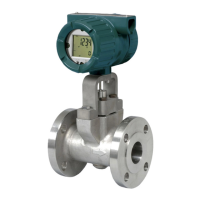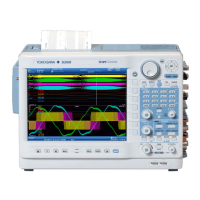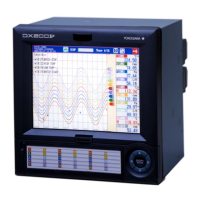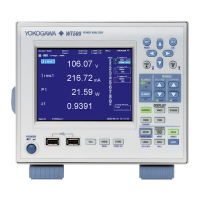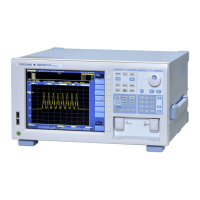<APPENDIX 6. Enhanced ARITHMETIC (AR) BLOCK>
A6-7
IM 01F06F00-01EN
A6.5 List of the Arithmetic Block Parameters
Relative
Index
Parameter Write Mode
Initial
Value
Description / Remarks
0 Block Header Block Tag = O/S
TAG=“AR”
Information relating to this function block, such as block tag, DD revision, and
execution time
1 ST_REV — 0
Indicates the revision level of the set parameters associated with the Arithmetic
block. If a setting is modied, this revision is updated. It is used to check for
parameter changes, etc.
2 TAG_DESC AUTO Null A universal parameter that stores comments describing tag information
3 STRATEGY AUTO 1
A universal parameter intended for use by a high-level system to identify function
blocks
4 ALERT_KEY AUTO 1
Key information used to identify the location at which an alert has occurred.
Generally, this parameter is used by a high-level system to identify specic areas in
a plant that are under the control of specic operators, to separate necessary alerts
only. This is one of the universal parameters.
5 MODE_BLK AUTO
A universal parameter representing the operation status of the Arithmetic block. It
consists of the Actual, Target, Permit, and Normal modes.
6 BLOCK_ERR — 0
Indicates the error status relating to the Arithmetic block.
The bit used by this function block is as follows:
Bit 1: Block Conguration Error
Bit 15: O/S mode
7 PV — 0
The result of a range extension function is substituted into this.
When viewed from the computing equation, PV is the main input.
8 OUT MAN 0 Block output
9 PRE_OUT — 0
Always indicates the calculation result. The value is substituted into OUT in Auto
mode. Indicates PV scaling (for making a memo).
Output scaling for the host (for making a memo)
10 PV_SCALE O/S
11 OUT_RANGE AUTO
12 GRANT_DENY AUTO 0
The parameter used to check if various operations have been executed. The bits
in the GRANT parameter corresponding to various operations are set before any
of them are executed. After the operations are complete, the DENY parameter
is checked to nd out if any bit corresponding to the relevant operation has been
set. If no bit has been set, it is evident that the operations have been executed
successfully.
13 INPUT_OPTS AUTO 0
Determines whether an input is used as a “good” input when the input status is
"bad" or “uncertain.”
Bit Function
0 Handles IN as “good” input if its status is “uncertain.”
1 Handles IN_LO as “good” input if its status is “uncertain.”
2 Handles IN_1 as “good” input if its status is “uncertain.”
3 Handles IN_1 as “good” input if its status is “bad.”
4 Handles IN_2 as “good” input if its status is “uncertain.”
5 Handles IN_2 as “good” input if its status is “bad.”
6 Handles IN_3 as “good” input if its status is “uncertain.”
7 Handles IN_3 as “good” input if its status is “bad.”
8 to 15 Reserved
14 IN AUTO 0 Input block
15 IN_LO AUTO 0
Input for a low-range transmitter.
This is used for the range extension function.
16 IN_1 AUTO 0 Auxiliary input 1
17 IN_2 AUTO 0 Auxiliary input 2
18 IN_3 AUTO 0 Auxiliary input 3
19 RANGE_HI AUTO 0 High limit for switching to a high-range transmitter by the range extension function.
20 RANGE_LO AUTO 0 Low limit for switching to a low-range transmitter by the range extension function.
21 BIAS_IN_1 AUTO 0 IN_1 bias
22 GAIN_IN_1 AUTO 0 IN_1 gain
23 BIAS_IN_2 AUTO 0 IN_2 bias
24 GAIN_IN_2 AUTO 0 IN_2 gain
25 BIAS_IN_3 AUTO 0 IN_3 bias
26 GAIN_IN_3 AUTO 0 IN_3 gain
27 COMP_HI_LIM AUTO +INF High limit of compensation factor f
28 COMP_LO_LIM AUTO -INF Low limit of compensation factor f

